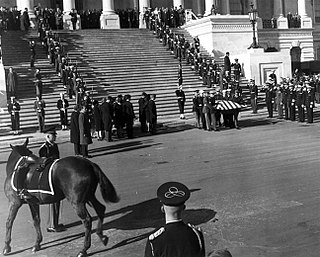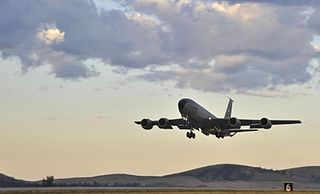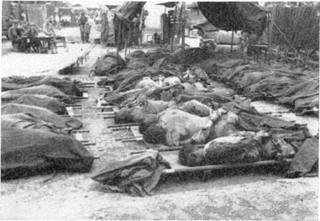 W
WThe 1919 Motor Transport Corps convoy was a long distance convoy carried out by the U.S. Army Motor Transport Corps that drove over 3,000 mi (4,800 km) on the historic Lincoln Highway from Washington, D.C., to Oakland, California and then by ferry over to end in San Francisco.
 W
WWhen they returned home from World War I, African-American veterans faced heavy discrimination. This article focuses on those African American veterans who were lynched after World War I.
 W
WThe history of the Arkansas Army National Guard and the Cold War involves several statewide re-organizations that occurred as a result of the evolving structure of United States Army Divisions and Brigades. In 1959 the state re-organized and restationed units in response to the Army's adoption of the Pentomic Division, the structure which was designed to counter the Soviet threat in eastern Europe. Several Arkansas National Guard units were mobilized in 1960 as part of the Berlin Crisis. In 1963 the state reorganized again as the administration of President John F. Kennedy focused on "Flexible Response" and divisions reorganized to meet the challenged of numerous small wars such as the war in Vietnam. In 1967 the 39th Infantry Division was reorganized as the 39th Infantry Brigade (Separate) as a result of a plan to reduce the total number of National Guard Divisions nationwide. The state would eventually gain a new headquarters, the State Area Command in order to provide a higher headquarters for several units which were not assigned to either the 142nd Field Artillery Brigade or the 39th Infantry Brigade (Separate).
 W
WThe history of the Arkansas Army National Guard and Korean War begins with the reorganization of the Arkansas Army National Guard following World War II. During this period, the Arkansas Air National Guard became a separate component of the Arkansas National Guard. The Arkansas Army National Guard provided Field Artillery and Medical units in support of combat operations in Korea.
 W
WThe 1994 Black Hawk shootdown incident, sometimes referred to as the Black Hawk Incident, was a friendly fire incident over northern Iraq that occurred on 14 April 1994 during Operation Provide Comfort (OPC). The pilots of two United States Air Force (USAF) F-15 fighter aircraft, operating under the control of a USAF airborne warning and control system (AWACS) aircraft, misidentified two United States Army UH-60 Black Hawk helicopters as Iraqi Mil Mi-24 "Hind" helicopters. The F-15 pilots fired on and destroyed both helicopters, killing all 26 military and civilians aboard, including personnel from the United States, United Kingdom, France, Turkey, and the Kurdish community.
 W
WA coal-black Morgan-American Quarter Horse cross, Black Jack served in the Caisson Platoon of the 3rd U.S. Infantry Regiment. Named in honor of General of the Armies John J. "Black Jack" Pershing, he was the riderless horse in more than 1,000 Armed Forces Full Honors Funerals (AFFHF), the majority of which were in Arlington National Cemetery. With boots reversed in the stirrups, he was a symbol of a fallen leader.
The Chaplain–Medic massacre took place in the Korean War on July 16, 1950, on a mountain above the village of Tuman, South Korea. Thirty unarmed, critically wounded United States Army (US) soldiers and an unarmed chaplain were murdered by members of the Korean People's Army (KPA) during the Battle of Taejon.
 W
WFairchild Air Force Base (AFB) is a United States Air Force base, located approximately twelve miles (20 km) southwest of Spokane, Washington.
 W
WThe Green Ramp disaster was a 1994 mid-air collision and subsequent ground collision at Pope Air Force Base in North Carolina. It killed twenty-four members of the U.S. Army's 82nd Airborne Division preparing for an airborne operation. It was the worst peacetime loss of life suffered by the division since the end of World War II.
 W
WThe Hill 303 massacre was a war crime that took place during the opening days of the Korean War on August 17, 1950, on a hill above Waegwan, South Korea. Forty-one United States Army (US) prisoners of war were shot and killed by troops of the North Korean People's Army (NKPA) during one of the numerous smaller engagements of the Battle of Pusan Perimeter.
 W
WThe 1992 Los Angeles riots, sometimes called the 1992 Los Angeles uprising, were a series of riots and civil disturbances that occurred in Los Angeles County in April and May 1992. Unrest began in South Central Los Angeles on April 29, after a trial jury acquitted four officers of the Los Angeles Police Department (LAPD) for usage of excessive force in the arrest and beating of Rodney King, which had been videotaped and widely viewed in TV broadcasts.
 W
WOn May 17, 1954, the U.S Supreme Court ruled that racial segregation of public schools was unconstitutional in the United States. That ruling would focus the spotlight of national attention in the United States upon the Arkansas National Guard and the integration of Central High School. The Arkansas National Guard was drawn into the conflict when Governor Orval Faubus ordered them to "Preserve the Peace" by turning away the black students who were attempting to integrate into Little Rock's Central High School. United States President Dwight D. Eisenhower reacted to this use of the Guard to foil the court-ordered integration by federalizing the entire Arkansas National Guard and using it to protect the nine black students integrating Central High School.
 W
WOperation Sea Signal was a United States Department of Defense operation in the Caribbean in response to an influx of Cuban and Haitian migrants attempting to gain asylum in the United States. As a result, the migrants became refugees at Guantanamo Bay Naval Base. The operation took place from August 1994 to February 1996 under Joint Task Force 160. The task force processed over 50,000 refugees as part of the operation. The U.S. Coast Guard and U.S. Navy rescued refugees from the sea and other migrants attempted to cross the landmine field that then separated the U.S. and Cuban military areas. Soldiers, Airmen, and Marines provided refugee camp security at Guantanamo Bay, and ship security on board the Coast Guard cutters. This mass exodus led to the U.S. immigration implementation of the Wet Feet Dry Feet Policy. The mass Cuban exodus of 1994 was similar to the Mariel boat lift in 1980.
 W
WThe Transcontinental Motor Convoys were early 20th century vehicle convoys, including three US Army truck trains, that crossed the United States to the west coast. The 1919 Motor Transport Corps convoy from Washington, D.C., to San Francisco used the incomplete Lincoln Highway.
 W
WThe United States Army Military Government in Korea (USAMGIK) was the official ruling body of the southern half of the Korean Peninsula from September 8, 1945 to August 15, 1948.